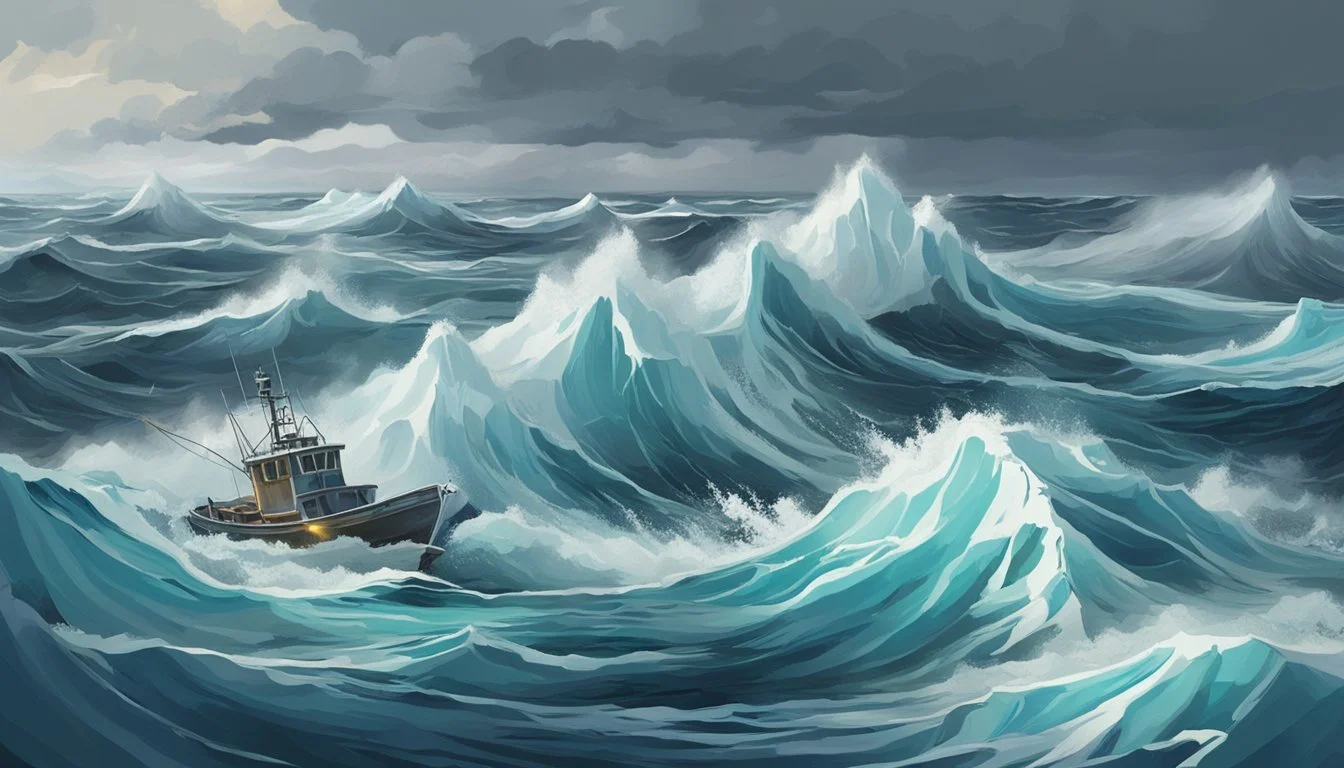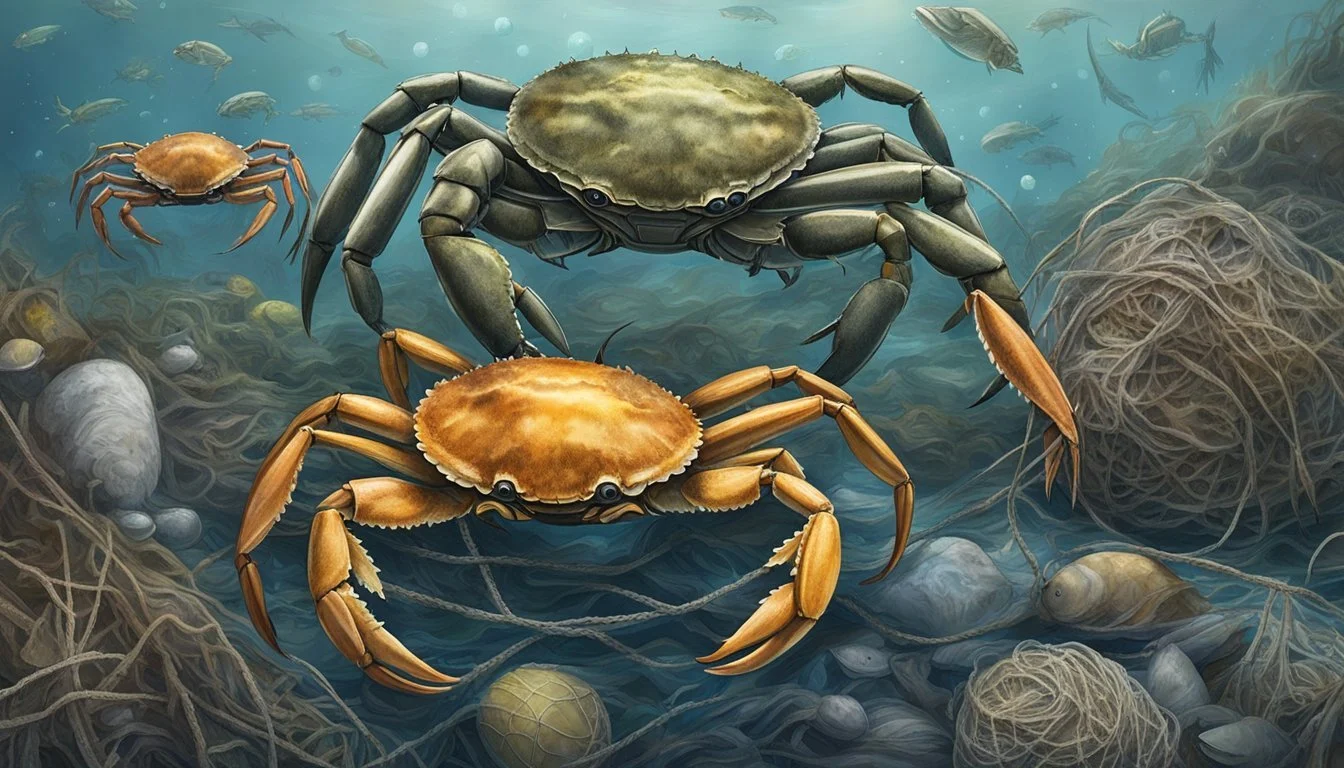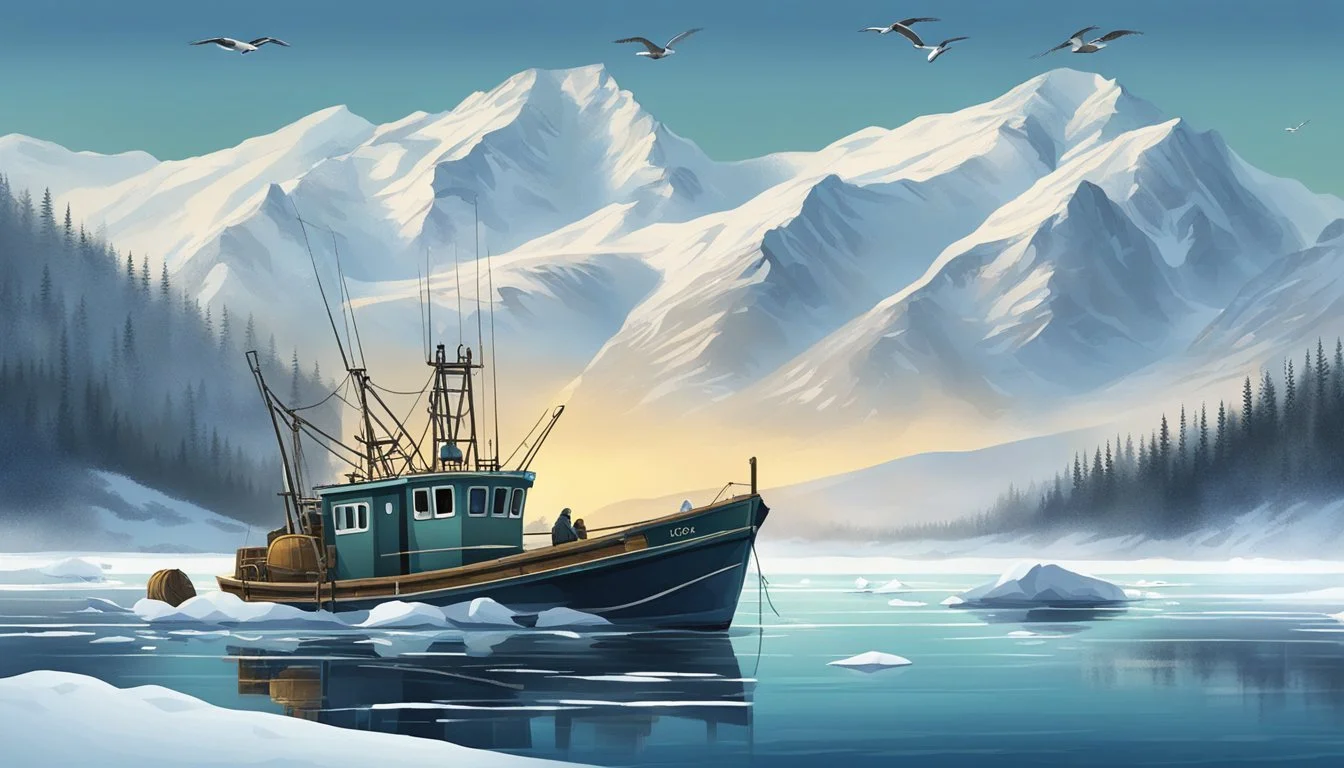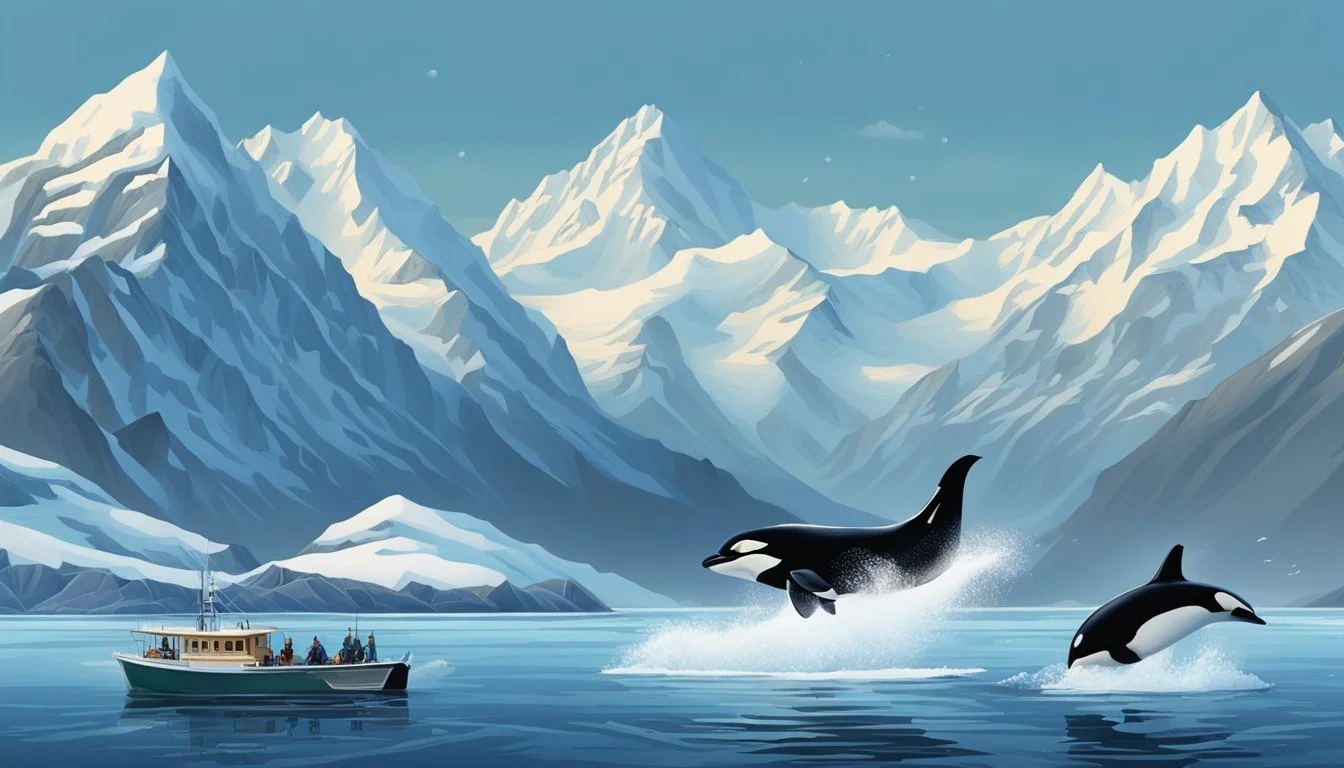The Environmental Challenges Facing the Alaskan Crab Industry
Climate Change and Overfishing Threaten Sustainability
The Alaskan crab industry faces significant environmental challenges that threaten its long-term sustainability. Climate change has disrupted marine ecosystems, leading to warmer waters and altered ocean chemistry. These changes have caused Alaskan king crab populations to decline dramatically, with billions of crabs disappearing in recent years.
Overfishing has also played a role in depleting crab stocks. Despite stricter fishing quotas and seasonal restrictions, many crab populations struggle to regenerate. The industry now grapples with closed harvests and economic losses, as evidenced by the $1.8 billion hit it took last year.
Conservation efforts are underway to address these issues. Marine Protected Areas have been established to safeguard critical habitats, while scientists conduct regular population assessments. These initiatives aim to balance the industry's economic needs with environmental protection, but the road to recovery remains uncertain.
Historical Context of the Alaskan Crab Industry
The Alaskan crab industry emerged as a significant commercial fishing venture in the mid-20th century. King crab fishing in Alaska's waters began on a small scale in the early 1900s, with local fishermen catching modest amounts.
The 1960s marked a turning point for the industry. Alaskan king crab fishing experienced rapid growth, becoming the fastest-growing segment of the United States fishing industry. In 1964, fishermen caught over 86 million pounds of king crab in Alaska's waters.
The 1980s saw a boom in crab fishing, particularly in Dutch Harbor. Huge quotas for red king crab attracted hundreds of boats to the port. At its peak, over 300 crab boats operated out of Dutch Harbor alone.
Initially, the fishery operated under a derby-style system. This approach led to intense competition and dangerous fishing practices as crews raced to catch as much as possible in a short time.
The Bering Sea became the epicenter of crab fishing, with king crab and snow crab as primary target species. The industry's growth significantly impacted fishing communities and local economies throughout Alaska.
Over time, the Alaskan crab industry faced various challenges, including overfishing concerns and declining crab populations. These issues led to the implementation of new management strategies and quotas to ensure sustainability.
Today, the Alaskan crab industry remains a crucial part of the state's economy, supplying king crab and snow crab to consumers worldwide. However, it continues to navigate environmental and economic challenges.
Current State of Crab Populations
Alaskan crab populations face significant challenges, with dramatic declines observed in recent years. Environmental changes and fishing pressures have severely impacted both snow crab and king crab species, raising concerns about their long-term sustainability.
Snow Crab Population Decline
The Bering Sea snow crab population has experienced a catastrophic collapse. In 2021, surveys revealed a staggering loss of nearly 47 billion crabs since the 2018-2019 marine heatwave. This represents a decline of over 90% in just a few years.
The rapid disappearance of snow crabs has led to unprecedented fishery closures. In 2022, the snow crab fishery was shut down for the first time in history. This closure has had severe economic impacts on fishing communities, with substantial revenue losses reported.
Climate change appears to be a primary driver of this population crash. Warming waters and changing ocean conditions have likely contributed to increased mortality and reduced reproductive success among snow crabs.
King Crab Conservation Status
Red king crabs in Southeast Alaska have also faced significant challenges. The commercial fishery for this species has struggled over the past decade, with only one opening in ten years. Current regulations allow fishing only when the regional stock exceeds 200,000 pounds.
In Bristol Bay, the red king crab fishery has experienced repeated closures due to low population numbers. These closures have further strained the Alaskan crab industry, already reeling from the snow crab collapse.
Conservation efforts for king crabs are ongoing, but recovery remains uncertain. Factors such as predation, habitat changes, and fishing pressure continue to impact their populations.
Juvenile Crabs and Reproduction Rates
The future of Alaskan crab populations hinges on successful reproduction and juvenile survival. Recent surveys have shown concerning trends in this area.
Juvenile crab numbers have declined alongside adult populations. This reduction in young crabs raises questions about the species' ability to rebound from current low levels.
Changing environmental conditions may be affecting reproduction rates. Warmer waters can impact crab mating behaviors, egg development, and larval survival. Ocean acidification poses an additional threat, potentially interfering with shell formation in young crabs.
Researchers are closely monitoring juvenile crab populations and studying factors influencing their survival. This data is crucial for developing effective management strategies and predicting future population trends.
Environmental Factors Affecting Crab Habitats
Alaskan crab populations face significant challenges due to changing environmental conditions. Rising ocean temperatures, acidification, and shifting currents directly impact their habitats and survival rates.
Climate Change and Warming Waters
Climate change has led to a steady increase in ocean temperatures in Alaskan waters. This warming trend affects crab habitats in several ways:
Altered migration patterns
Changes in food availability
Increased metabolic stress on crabs
Warmer waters can force crabs to seek cooler depths, potentially overcrowding certain areas. This shift may lead to increased competition for resources and reduced breeding success.
The warming also affects the marine ecosystem as a whole. Phytoplankton blooms, a crucial food source for many species, may occur at different times or locations. This disruption can have cascading effects throughout the food web, ultimately impacting crab populations.
Ocean Acidification and Its Impacts
Ocean acidification poses a serious threat to crab populations:
Shell formation difficulties
Reduced survival rates of larvae
Altered sensory capabilities
As the ocean absorbs more CO2, its pH level decreases. This change makes it harder for crabs to build and maintain their calcium carbonate shells. Juvenile crabs are particularly vulnerable, as their shells are still developing.
Acidification can also affect the crabs' ability to detect predators or find food. This sensory impairment may lead to higher mortality rates and reduced overall fitness of crab populations.
Changing Ocean Currents
Shifts in ocean currents due to climate change can significantly impact crab habitats:
Altered larval dispersal patterns
Changes in nutrient distribution
Disruption of temperature gradients
Ocean currents play a crucial role in transporting crab larvae to suitable habitats. Changes in these currents may lead to larvae settling in unfavorable areas, reducing survival rates.
Currents also distribute nutrients throughout the marine environment. Alterations in these patterns can affect food availability for crabs and their prey. This disruption may lead to changes in crab distribution and population density across different regions.
Temperature gradients created by currents are important for crab life cycles. Disruptions to these gradients can affect breeding patterns and the timing of molting events, potentially impacting long-term population stability.
Challenges in Fisheries Management
Managing Alaska's crab fisheries involves complex issues of sustainability, regulation, and environmental impact. Balancing economic needs with conservation is an ongoing challenge for fishery managers and industry stakeholders.
Sustainable Fishing Practices
Implementing sustainable fishing practices is crucial for the long-term viability of Alaska's crab industry. Fishery managers work to set catch limits based on scientific stock assessments. They also establish gear restrictions and fishing seasons to protect crab populations during vulnerable life stages.
The North Pacific Fishery Management Council plays a key role in developing sustainable management plans. These plans aim to prevent overfishing while maximizing the economic value of the fishery. Measures like on-board observer programs help ensure compliance with regulations.
Improved technology, such as more selective fishing gear, can reduce environmental impacts. However, adopting new practices often requires significant investment from fishing operators.
Fishery Closures and Quota Systems
Fishery closures and quota systems are critical tools for managing crab populations. When stocks fall below sustainable levels, managers may need to implement full or partial closures.
The recent closure of the Bristol Bay red king crab fishery illustrates this challenge. Declining populations led to a complete shutdown, causing economic hardship for fishing communities.
Quota systems allocate specific catch amounts to individual fishers or vessels. This approach can promote more efficient harvesting practices. It also gives fishers a stake in the long-term health of the fishery.
Balancing quotas between different user groups (e.g. commercial, recreational, subsistence) adds another layer of complexity to management decisions.
Impact of Bycatch and Trawl Nets
Bycatch - the unintended capture of non-target species - is a significant issue in crab fisheries. Trawl nets used to harvest groundfish can inadvertently catch and injure crabs.
Fishery managers employ various strategies to reduce bycatch:
Time/area closures in sensitive habitats
Gear modifications to increase selectivity
Bycatch limits that can trigger fishery closures
The National Marine Fisheries Service monitors bycatch levels and works with industry to develop mitigation measures. Balancing the needs of different fisheries that overlap in the same areas remains an ongoing challenge.
Reducing bycatch is essential for protecting crab populations and the broader marine ecosystem. However, some measures may limit fishing opportunities in other sectors.
Economic and Social Dimensions of the Alaskan Crab Industry
The Alaskan crab industry plays a crucial role in local economies and communities. It provides jobs, attracts tourism, and faces unique challenges in its supply chain and workforce.
Commercial Fisheries and Local Jobs
Crab fishing remains a vital source of employment for coastal communities in Alaska. The industry supports thousands of direct and indirect jobs, from fishermen to processors and support services. In Dutch Harbor, one of the main crab fishing hubs, the sector contributes significantly to the local economy.
Economic stability in these regions often hinges on the success of crab seasons. When harvests are poor, it ripples through the entire community. Businesses struggle, and workers may face unemployment or underemployment.
The industry also grapples with an aging workforce and difficulties attracting younger generations to fishing careers. This demographic shift poses long-term challenges for the sustainability of fishing communities.
Tourism and Cultural Significance
Crab fishing has become an integral part of Alaska's cultural identity, largely due to popular TV shows like "Deadliest Catch." This media exposure has boosted tourism in coastal towns, with visitors eager to experience the crabbing culture firsthand.
Many communities now offer crab feasts, fishing tours, and museum exhibits showcasing the industry's history. These attractions help diversify local economies and provide additional income streams during off-seasons.
The cultural significance of crab fishing extends beyond tourism. It shapes local traditions, art, and community events. Festivals celebrating the start of crab seasons are common, bringing together residents and visitors alike.
Supply Chain and Labor Shortages
The Alaskan crab industry faces ongoing challenges in its supply chain and workforce. Labor shortages have become increasingly acute, with fewer workers willing to take on the demanding and dangerous job of crab fishing.
This shortage affects every stage of the supply chain:
Fishing vessels struggle to find experienced crew members
Processing plants face difficulties in staffing during peak seasons
Transportation and distribution networks experience delays due to worker scarcity
Consumer behavior also impacts the industry. Fluctuations in demand for crab products can lead to price volatility, affecting fishermen's incomes and the overall economic stability of fishing communities.
Climate change further complicates the supply chain, with shifting crab populations and unpredictable weather patterns making it harder to plan fishing operations effectively.
Conservation and Sustainability for the Future
The Alaskan crab industry faces critical environmental challenges. Efforts to protect marine ecosystems, implement effective regulations, and engage local communities are essential for long-term sustainability.
Marine Protected Areas and Biodiversity
Marine Protected Areas (MPAs) play a crucial role in preserving biodiversity and supporting crab populations. These designated zones limit fishing activities and protect critical habitats. In Alaska, MPAs help safeguard breeding grounds for species like the Bristol Bay Red King Crab.
MPAs also serve as scientific research areas. Researchers study crab behavior, population dynamics, and ecosystem interactions within these protected zones. This data informs sustainable management practices for commercial fisheries.
The establishment of new MPAs requires careful consideration. Balancing conservation goals with the needs of the fishing sector is essential. Stakeholders work together to identify key areas for protection while minimizing economic impacts on local communities.
Regulatory Frameworks for Environmental Protection
Robust regulatory frameworks are vital for sustainable crab fisheries. Alaska's Department of Fish and Game sets catch limits based on scientific assessments of crab populations. These quotas help prevent overfishing and maintain healthy stock levels.
Gear restrictions reduce bycatch and minimize habitat damage. Regulations mandate the use of crab pots with specific designs to allow undersized crabs and non-target species to escape. Regular inspections ensure compliance with these requirements.
Seasonal closures protect crabs during vulnerable life stages. Fishing bans during molting and mating periods allow populations to reproduce and grow. These measures contribute to the long-term viability of crab stocks.
Community Engagement in Conservation Efforts
Local communities play a crucial role in conservation initiatives. Fishermen contribute valuable knowledge about crab habitats and population trends. This information supplements scientific data and improves management decisions.
Education programs raise awareness about sustainable fishing practices. Workshops and training sessions help fishermen adopt environmentally friendly techniques. These efforts reduce the industry's ecological footprint and promote responsible resource use.
Collaborative research projects involve local stakeholders. Scientists work with fishing communities to monitor crab populations and assess the effectiveness of conservation measures. This partnership fosters trust and ensures that management strategies consider both ecological and socioeconomic factors.




